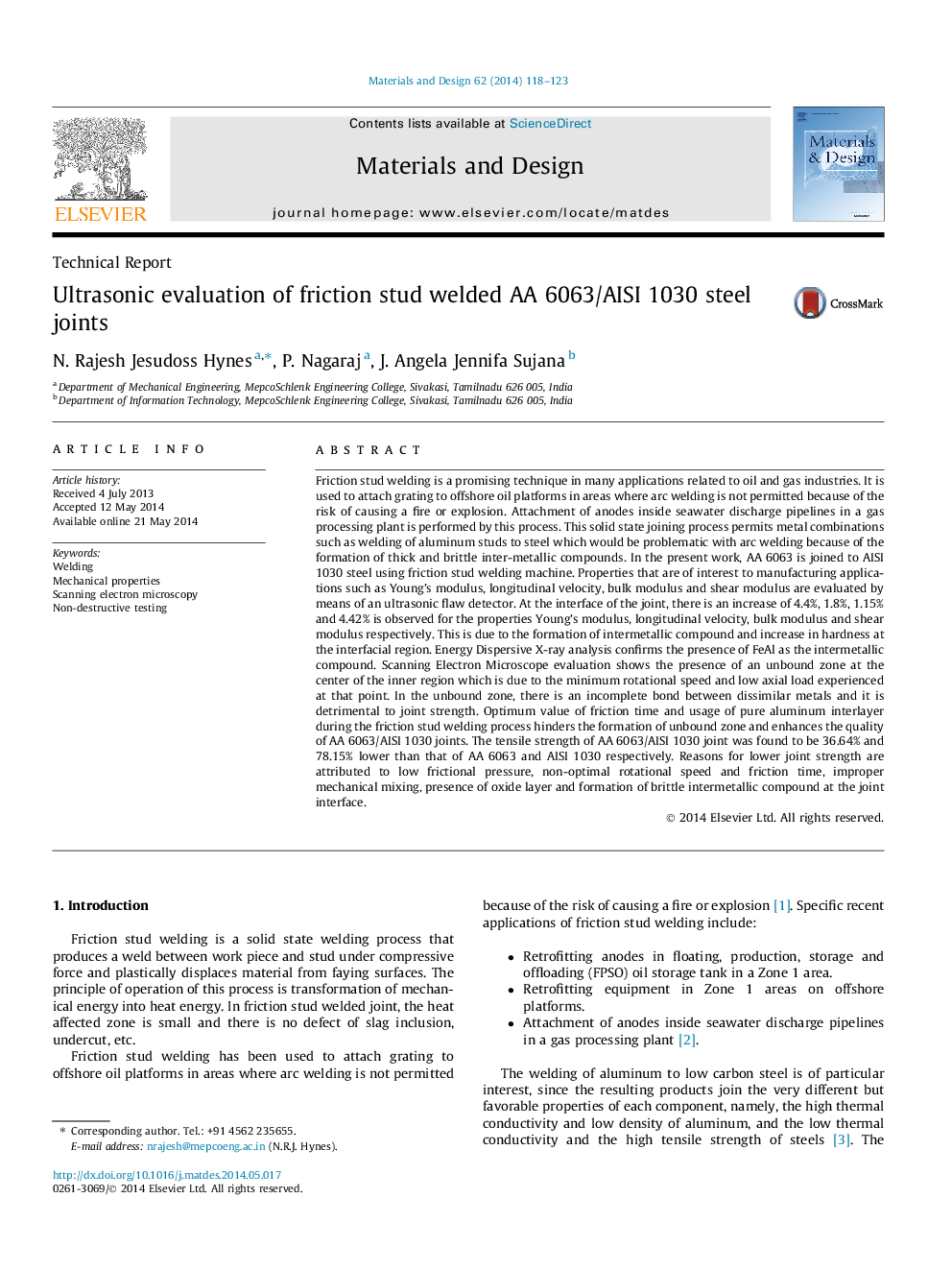| کد مقاله | کد نشریه | سال انتشار | مقاله انگلیسی | نسخه تمام متن |
|---|---|---|---|---|
| 829085 | 1470335 | 2014 | 6 صفحه PDF | دانلود رایگان |

• Friction stud welding of AA 6063 and AISI 1030 was done successfully.
• Ultrasonic evaluation of interfacial properties.
• EDX analysis confirms intermetallic compound (FeAl) in the interfacial region.
Friction stud welding is a promising technique in many applications related to oil and gas industries. It is used to attach grating to offshore oil platforms in areas where arc welding is not permitted because of the risk of causing a fire or explosion. Attachment of anodes inside seawater discharge pipelines in a gas processing plant is performed by this process. This solid state joining process permits metal combinations such as welding of aluminum studs to steel which would be problematic with arc welding because of the formation of thick and brittle inter-metallic compounds. In the present work, AA 6063 is joined to AISI 1030 steel using friction stud welding machine. Properties that are of interest to manufacturing applications such as Young’s modulus, longitudinal velocity, bulk modulus and shear modulus are evaluated by means of an ultrasonic flaw detector. At the interface of the joint, there is an increase of 4.4%, 1.8%, 1.15% and 4.42% is observed for the properties Young’s modulus, longitudinal velocity, bulk modulus and shear modulus respectively. This is due to the formation of intermetallic compound and increase in hardness at the interfacial region. Energy Dispersive X-ray analysis confirms the presence of FeAl as the intermetallic compound. Scanning Electron Microscope evaluation shows the presence of an unbound zone at the center of the inner region which is due to the minimum rotational speed and low axial load experienced at that point. In the unbound zone, there is an incomplete bond between dissimilar metals and it is detrimental to joint strength. Optimum value of friction time and usage of pure aluminum interlayer during the friction stud welding process hinders the formation of unbound zone and enhances the quality of AA 6063/AISI 1030 joints. The tensile strength of AA 6063/AISI 1030 joint was found to be 36.64% and 78.15% lower than that of AA 6063 and AISI 1030 respectively. Reasons for lower joint strength are attributed to low frictional pressure, non-optimal rotational speed and friction time, improper mechanical mixing, presence of oxide layer and formation of brittle intermetallic compound at the joint interface.
Journal: Materials & Design (1980-2015) - Volume 62, October 2014, Pages 118–123